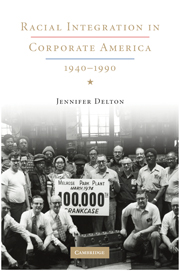Epilogue: From Affirmative Action to Diversity
Published online by Cambridge University Press: 05 June 2012
Summary
By 1985, large corporations were affirmative action's most credible champions. To deter conservatives' attempts to prohibit affirmative action, business leaders had revived the old “fair employment is good business” argument, substituting in the place of fair employment a new concept: “diversity.” In its original form, diversity referred to racial and ethnic variety, embraced as a positive social goal. Diversity seemed especially concocted to persuade critics that affirmative action policies were necessary in both education and employment to keep American business competitive in the increasingly global marketplace. The term had made its rhetorical debut in the Supreme Court's Bakke decision of 1978, which struck down the University of California at Davis's quota-based affirmative action admissions program, but left open the possibility that university admission policies could take race into consideration as one factor among many to create “a diverse student body.” After that, proponents of affirmative action recast arguments about making up for past injustices into new arguments about the benefits of diversity in education and in the workplace, all of which seemed to center around preparing white students and employees for work in a racially and ethnically diverse workforce. In 1987, the Hudson Institute published Workforce 2000: Work and Workers for the Twenty-First Century, with its alarming statistics about the decreasing whiteness of the American workforce and its warnings that American employers should prepare for an increasingly diverse employee body by 2000. Employers heeded the warnings.
- Type
- Chapter
- Information
- Racial Integration in Corporate America, 1940–1990 , pp. 280 - 284Publisher: Cambridge University PressPrint publication year: 2009



